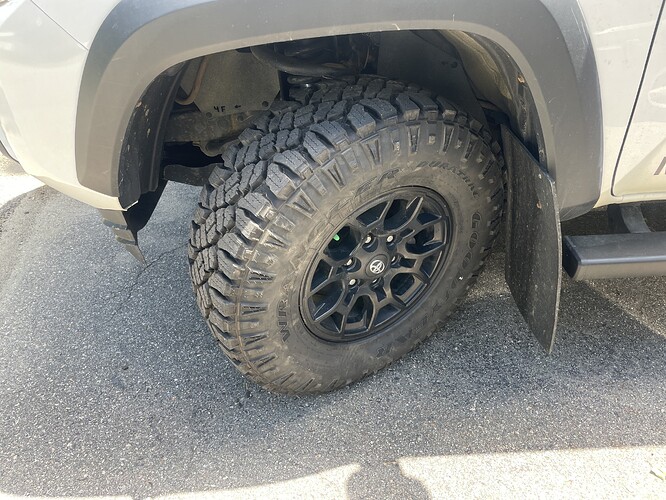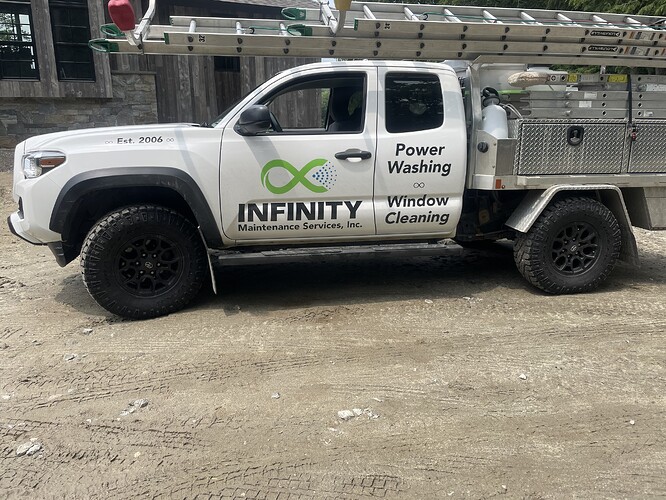Thank you for sharing @garry.cooper, may I please ask - are you blocking the waste water output on the RO filter? Or waste water goes out on the other end?
@Steve A RO filter that does not need any extra pump for the RO membrane filter is this one:
https://www.axeonwater.com/product/hf5-series-membrane-elements/
I dont know the tap water pressure where you are at, but at least here where Im at this works great.
Just remember to regulate the waste water.
Waste water drains out
There is also this system but it’s pricy!!
@garry.cooper , what system is that? Link please ?
It’s a diy
Been awhile since I bought something new for Chuck. How ‘bout some new sneakers?
These are the Goodyear Duratracs. 10 ply, LT rated tires. Went with 265/75/16, which is a decent bump from the stock 245/75’s.
No more bread van tires here ![]()
![]()
Not trying to be ‘that guy,’ but shouldn’t you have gone with 265/70 ?
This was the size most recommended for a modest size bump without risk of rubbing.
Well, they don’t make every width/height option, so it’s possible that 265/70 isn’t available. It won’t be too big of an issue, but your speedometer is going to be off slightly because the new tires have a larger circumference.
Does it ride like a brick now? That’s the same tire size I have on my truck but it’s a 3/4 ton diesel.
So will the odometer. He’ll technically be putting less miles on the truck now. Should help with resale value.
I think the calibration might’ve been off a little to start with (not uncommon for stock speedometers to read a few mph higher than reality).
I checked it against gps, and it’s within .5 mph @ 40 now
Feels a little smoother. I had to jack up the pressure on the stock tires quite a bit. I could probably afford to go down a few more pounds with these beefier tires.
Interesting. What are you running them at now? Have you calculated load per axle?
Good point.
I have not. I keep putting off getting the thing weighed. Doesn’t help that our transfer station/waste management here has weird hours.
Currently at 37/42, front/rear. Stock recommendation is 32 all around (but that’s for an empty truck, basically). Tires are rated to 80 psi.
How it looks:
Previously on the stock tires, I ran them 38/43 front/rear. Those were only rated to like 45 psi.
You should definitely weigh it and do the math but I also like to use the chalk metho. It gives you a visual of how your tire is actually contacting the road. Then reference the load rating for that tire at different pressures and make sure they match up and you should be good to go.
Got a link?
I had no idea this was even a thing.
A chart is great, but what I want now is a calculator like we have for nozzle/gpm/psi calculations, ![]()
No but you can Google “tire chalk test” and you’ll get an astounding amount of videos and forum results on it. Unfortunately, a lot of “off road enthusiast” YouTube channels are extremely corny and tend to fluff their videos with unnecessary BS instead of just getting straight to the point.
Essentially, you start with a baseline pressure that you think is close to what you should have in the tire. Then chalk across the tread about 6-8" wide. Then drive straight forward for 100’ or so and then reverse the same distance. Look at the chalk to see where it’s worn off and that will tell you whether you need to increase or decrease the pressure to get even wear and a decent ride. Once you find the right psi you just need to cross reference the tire manufacturer’s chart to make sure that pressure is suitable for the load on that axle. Remember, two tires per axle so if your axle is holding up 2000 pounds you need enough psi in each tire to support 1000 pounds.



